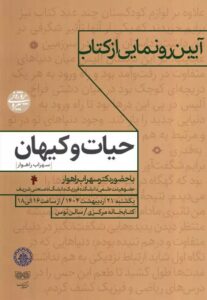Mohadese Khoschtinat
Department of Physics, Sharif University of Technology
Supervisor: Shant Baghram
Investigating the Cosmic Web with One-point and Crossing Statistics
Abstract: The standard model of cosmology, ΛCDM model, successfully predicted almost all the observations from the Cosmic Microwave Background and the Large Scale Structure surveys. However, as the observational data sets become more accurate and finer on the small scales, deviations between the predicted and observed quantities get bigger. Some deviations challenge the ΛCDM model, e.g., Hubble constant and σ8 tension. Along with these challenges, fundamental questions about the nature of the dark sector of the universe have led to the rich literature around the possible extension of the ΛCDM, to mention a few, the decided massive neutrino inclusion, the interacting and/or clustering dark energy, and deviation from Gaussian initial condition. To this point, most of these studies used the two-point correlation function as the primary tool to study the cosmological data and the matter density field. The two-point correlation function is an ideal tool up to the linear scales, beyond which, due to the gravitational effect, the density field is no longer Gaussian and the information leaks to the higher-order correlations. The leaked information on the higher-order correlations is of utmost importance since one can differentiate between various extensions of the ΛCDM models based on this information that the two-point correlation function can not capture. This situation calls for complementary tools for studying the cosmological data set. Accordingly, in this thesis, we deploy the one-point statistics, the letter functions—G, F, and J functions, to study the massive neutrino models, as an example of an extended model of cosmology and the vanilla model. Our results show that this method can differentiate between these two models. On top of that, we find a footprint of neutrinos at scales less than a megaparsec. Furthermore, we calculate these statistics in various cosmic environments, and upon that, the voluminous environments are the best choice to set an upper limit on the total neutrino mass.
Keywords: Large Scale Structure, Cosmic Web, Massive Neutrino, One-point Statistics
چهارشنبه 17 اردیبهشت 1404، ساعت 16:00
Wednesday 7 May – 16:00 Tehran Time
دانشکده فیزیک – آمفیتئاتر – تالار جناب /Physics Department – Amphitheatre– Jenab Hall

